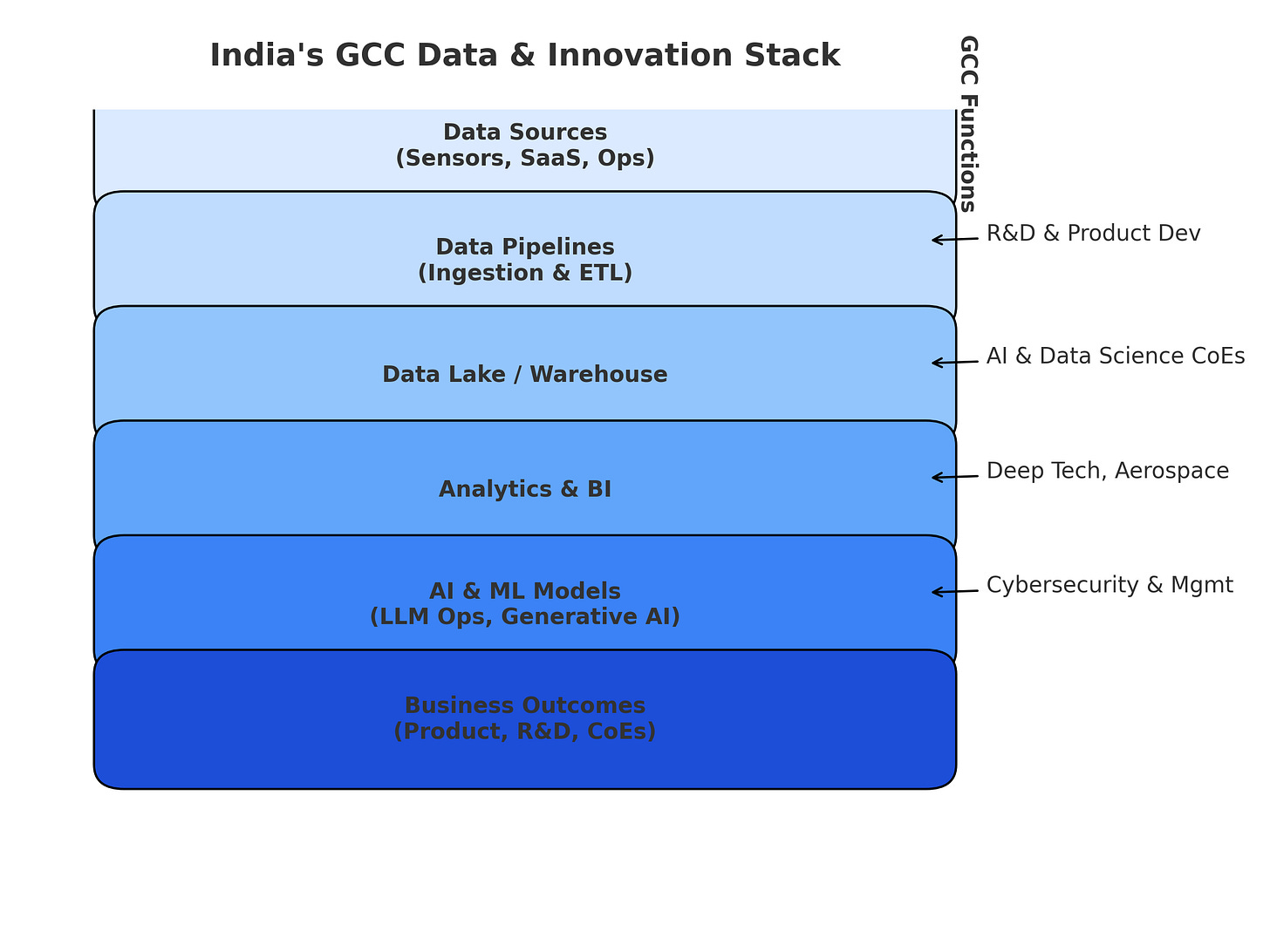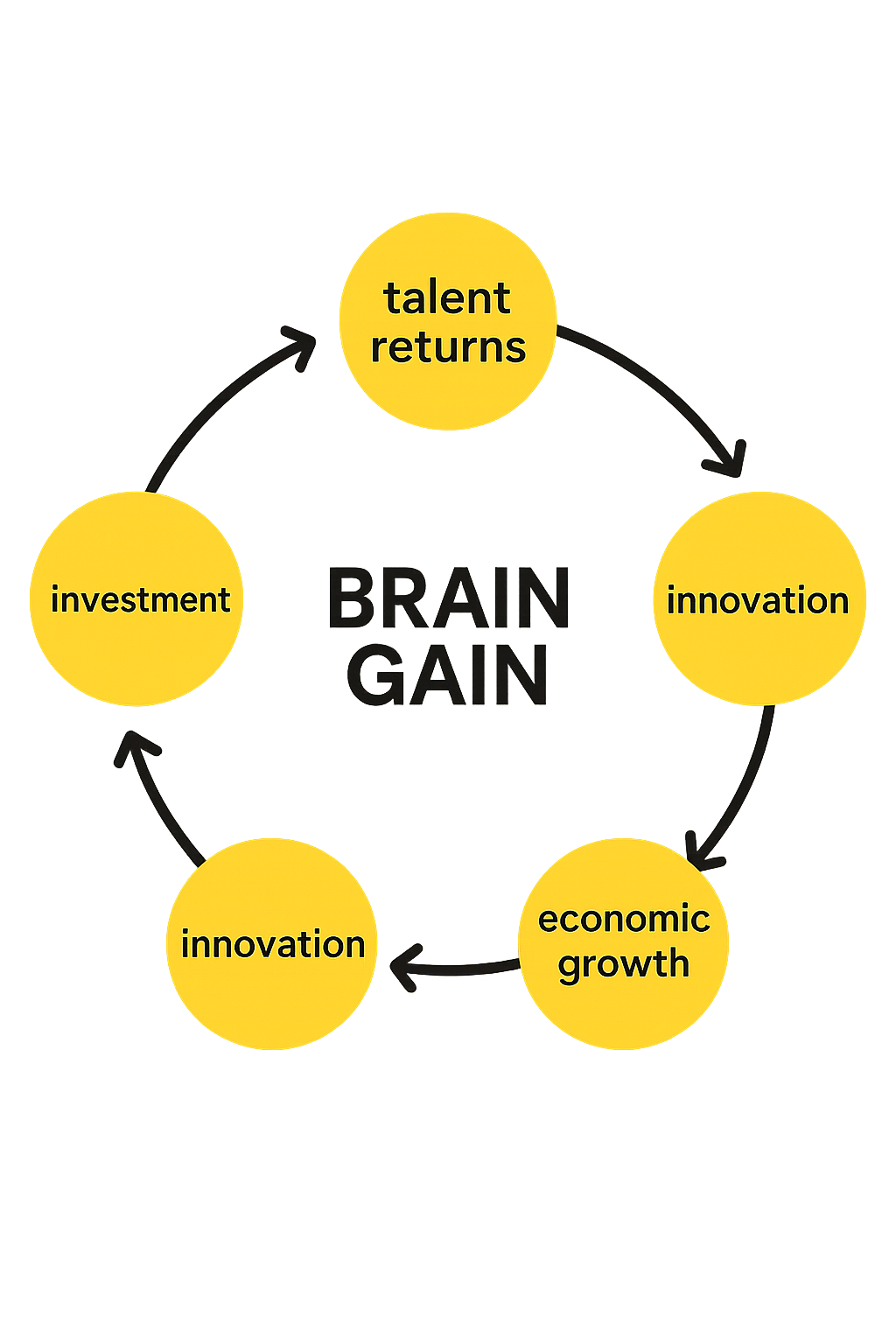Inside India’s GCC Flywheel: Where Talent, AI, and R&D Collide
India’s $62B GCC engine is shifting from cost centers to creation hubs — deciding if India stays the world’s back office or becomes its innovation core.
📌 Note: This is Part 1 of a two-part series.
Part 2 — featuring returning founders, VC funds, and GCC leaders reshaping India’s innovation decade — will follow soon.
India’s GCC Moment
India now hosts 2000+ Global Capability Centers (GCCs) employing nearly 1.9 million professionals
Market value: ~$62B, projected to hit $110B with 2500+ centers and 3+ million employees by 2030
India accounts for 50%+ of the world’s GCCs — making it the undisputed hub of this model
Recommended Watch
This short video estimates India’s GCC ecosystem at ~$151B by including adjacent IT exports and services. Our analysis uses a narrower definition — focusing on the core GCC market (~$62B today) that drives R&D, AI, and product innovation. Both views point to India’s central role in the next decade of global enterprise operations. Video Credits- AIM
GCC vs GIC: Understanding the Shift
GCC (Global Capability Center):
Modern term used by NASSCOM, Zinnov, and consulting firms. Represents global innovation, R&D, AI, and product development hubs — not just cost-arbitrage or back-office functions.
Why It Matters: Shows India’s shift from back-office operations to value creation, product innovation, and thought leadership.
GIC (Global In-house Center):
Older term focused mainly on shared services and cost savings for parent companies.
Why It Matters: Sounded more like a “captive center” and is less aligned with today’s innovation-driven narrative.
From Back Office → Innovation Engine
The GCC playbook is evolving from cost-efficiency to value creation:
R&D & Product Development
CoEs, IP creation, global feature charters
Cities: Bengaluru, Hyderabad, PuneAI & Data Science
LLM Ops pilots, predictive analytics CoEs
Cities: Bengaluru, Gurugram, HyderabadDeep Tech & Aerospace
UAV, satellite, propulsion startups
Cities: Hyderabad, Bengaluru, KeralaCybersecurity & Product Management
Emerging talent pools and Tier-2 expansion
Cities: Jaipur, Indore, Coimbatore, Bhubaneswar
This is no longer India as the back office.
This is India as the global lab.
How India’s GCCs now span the full stack — from data pipelines to AI-driven business outcomes
The Brain Gain Flywheel
India is now witnessing a reverse migration wave:
Senior executives, founders, and VCs are returning
Launching funds, spinning out AI/SaaS ventures, and leading GCC charters
Why It Matters:
Keeps IP and capital domestic
Transforms GCC veterans into entrepreneurs
Creates a self-reinforcing innovation loop
Global Playbook Examples:
Israel: Cybersecurity dominance through returning talent
China: Hardware & AI innovation surge powered by repatriates
Germany: Mittelstand-fueled deep tech growth
Vietnam: Outsourcing hub turned full-stack product center
Canada: Became an AI research magnet by attracting global talent
The self-reinforcing loop that transforms GCC veterans into founders, investors, and innovators.
Global Talent Tug-of-War
India is not alone in this race. Countries competing for the same talent include:
Finland & Germany: PR fast-track programs
Japan: Relaxed IT engineer visa rules
Russia: Active recruitment of engineers
Canada & Australia: Immigration magnets for tech professionals
The risk: India trains the world’s best technocrats — but others reap the rewards.
Beyond Headcount, Beyond Cost
This is no longer about just filling seats:
70% of GCCs are investing in generative AI
78% are upskilling teams for advanced AI capabilities
Office demand driven by GCCs hit a record 50.9M sq. ft. in 2025
Only 24 GCCs cross $1B in revenue today — but that number is doubling every five years
The Crossroads
India’s GCC story is at a decision point:
Option 1: Remain the world’s most efficient service economy
Option 2: Become the launchpad for globally competitive products — AI platforms, SaaS, and climate tech
📌 Part 2 coming soon:
Spotlighting returning founders, VC funds, and GCC leaders already turning this flywheel — and a roadmap for converting talent density into innovation gravity.






Interesting read